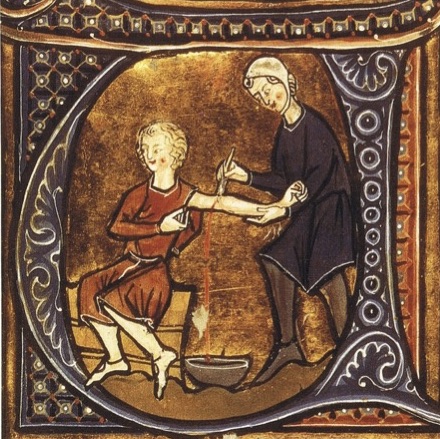This blog was written by Samantha Truex, CEO of Quench Bio, as part of the From The Trenches feature of LifeSciVC.
Due to meetings in London on a Friday and in Dortmund on the following Monday, I spent the weekend in London. As I walked the streets appreciating its history, I could not help but think of the history of medicine, as well. Images of leeches and bloodletting in Tudor times came to mind. Imagine being a patient back then.
I feel fortunate to live in current times when modern medicine has improved diagnosis and treatment dramatically over the past centuries and even in the last 2 decades. I won’t bother to quote statistics proving that; there are too many to account for what we all know.
We read and assess statistics about patients every day in our industry. What I sometimes forget to do is imagine being a patient now. I need a reminder that these statistics are not just numbers. Every one is a real person with a family facing both disease and the many complexities of medical care.
Just in the last 2 months, I have been reminded repeatedly how challenging life is for several patients and their caregivers:
- A former colleague has supported his wife lovingly through over a decade of living with severe multiple sclerosis. This year, his wife was also diagnosed with glioblastoma. With humor and grace, this couple recently braved their son’s wedding, the timing of which was advanced hastily so that mom could attend.
- For the last 6 weeks, my niece who suffers from depression and severe anxiety has been coping with the start of college. Neither medicine nor therapy have fully addressed her illness. She’s tackling the challenge, yet going home more often than her parents hoped. They face the difficult decision multiple times per week whether to push her further outside her comfort zone or comfort her fears.
- Last month, my dear friend revealed that her father was diagnosed with Stage IV melanoma. Upon assessment of his lymph nodes, he was also diagnosed with lymphoma. My friend is a Microsoft executive, making daily choices about which meetings to miss and move so that she can take her dad to his treatments.
- Last week a family friend visited from Atlanta. He showed pictures of his 17-year-old daughter from Friday night. She was in the last place I’d think of; she was curled up in a hospital bed with her best friend. The best friend has osteosarcoma that has spread from its origin in her lower leg to her chest. So many thoughts of the world ahead of a 17-year-old swirled through my head. Neither of those girls should have to be in that hospital bed. My heart aches for both girls – and for their parents.
As I shared in a previous blog on inflammatory diseases, I have several friends who steel themselves daily to the challenges of living with autoimmune diseases. I also have a parent and in-laws with multiple medical problems. While none is life threatening, they are scary problems. They are burdensome. They are painful, expensive and intrusive.
I could go on. I’m sure you could, too. I have the utmost respect for these patients and their caregivers. Their situations remind me how lucky I am to have my health. Their perseverance and courage are laudable. Their heroism is largely unsung.
In our industry, we wish we could make it better. That is why we come to work on drug development every day.
Despite the recent Gallop poll here showing that the pharmaceutical industry is now the most poorly regarded industry in Americans’ eyes, I maintain hope. I believe the vast majority of people working in biopharma are here because we care about improving the lives of patients. Though many drug programs fail, many that have succeeded have made a substantial positive difference. I believe we can pull together and continue our quest to understand and harness new biology against those diseases that still challenge real people every day. Today’s patients are waiting.






